#St Margaret's Richmond Upon Thames
Explore tagged Tumblr posts
Text
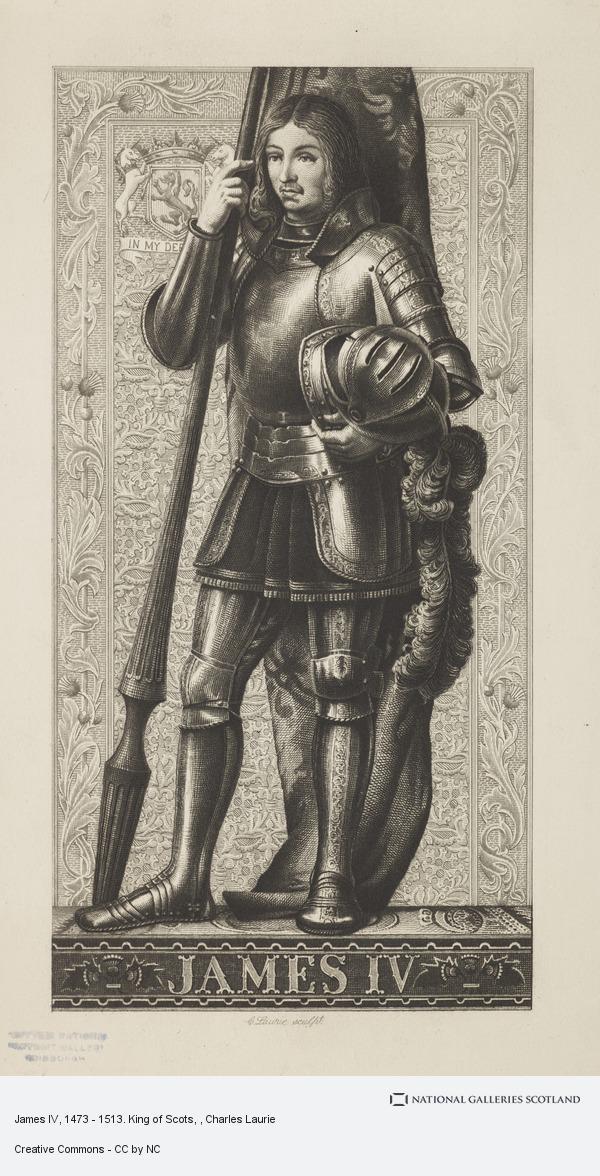

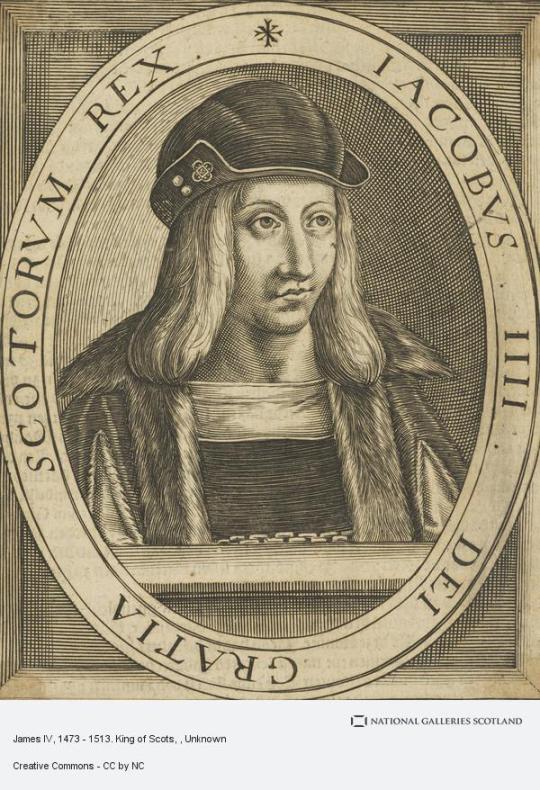
24th June 1488 saw the coronation at the age of 15 of King James IV arguably the first effective monarch of the House of Stewart.
Young James had been a pawn in the forces that had brought down his father, and was said to have warn an iron belt around his waist in penance.
James was a Renaissance King who spoke several languages including Gaelic, English and French and was keen on arts and learning. Aberdeen University was founded, the printing press came to Scotland and education was made compulsory for barons and wealthy landowners. He spent lavishly on the court and built new halls in Edinburgh and Stirling castles. Edinburgh became main burgh and centre of government and justice.
He successfully settled major feuds between his nobles and between the Highland clans, and ended the hold of the MacDonald who had semi-independently ruled the Western Isles. He supported the Yorkist pretender Perkin Warbeck which provoked a military response from his Henry VII of England. However this was patched up in a truce ‘of perpetual peace‘ in 1502, and his marriage to Margaret Tudor, daughter of Henry VII, in the following year was to ultimately bring the thrones of Scotland and England together.
By 1513 Henry VIII was on the throne of England and fighting in France. Encouraged by Louis XII of France under the ‘Auld Alliance’ James invaded England but the Scots were massacred by the English forces under the Earl of Surrey at the Battle of Flodden Field in Northumberland on 9 September 1513.
Like many of Scotland's nobility, James was killed, there have been many theories about what happened to his body the most likely outcome is after the battle it was taken to Berwick, where it was embalmed and placed in a lead coffin before being transported to London.
The recipient of this gory package was said to have been Catherine of Aragon, first wife of Henry VIII, and in charge of the family business while the English king fought in France.
She, in turn, sent the dead king's surcoat, blood-stained and slashed, to her husband with the recommendation that he use it as a war banner.
The body was left in the monastery of Sheen in Richmond upon Thames unburied due to James having been excommunicated by The Pope for breaking The Treaty of Perpetual Peace. The Monastry was eventually demolished, but nothing is known of what happened to our King.
Legend has it that the skull was removed and used as a football before the master glazier to Elizabeth I took it as a souvenir. Legend also has it that the skull was eventually handed over to the Great St. Michael's Church in Wood Street in the City of London and buried there. The church is long gone, as is the church yard, the latter now occupied by a pub by the name of the Red Herring.
David Ross, historian and convener of The Society of William Wallace must have believed this as he, along with some London friends, had plans to install a plaque to James IV somewhere in Wood Street London. Sadly, big Davie passed away unexpectedly before ambition was never realised.
Other unlikely theories go that James had survived and had gone into exile, or that his body was buried in Scotland. Two castles in the Scottish Borders are claimed as his resting place. The legend ran that, before the Scots charge at Flodden, James had ripped off his royal surcoat to show his nobles that he was prepared to fight as an ordinary man at arms. Robert Lindsay of Pitscottie, writing in the 1570s, claimed that a convicted criminal offered to show him the Kings grave ten years after the battle, but Albany refused.
If David Ross believed it was in London that's good enough for me, but anyone wishing to reflect on this much loved King best go to Flodden Field and pay your respects to all that died there.
17 notes
·
View notes
Photo

SOPHIE RAWORTH (b1968-).British journalist and broadcaster working for the BBC. She is a senior newsreader mainly presenting BBC News at Six and BBC News at Ten. She can often be found presenting state occasions. In 2015, she became the new presenter of consumer affairs programme Watchdog and in 2016, began presenting Crimewatch, both for BBC One. https://en.wikipedia.org/wiki/Sophie_Raworth
LIVES IN: ST MARGARET’S. Address NOT KNOWN
LIVED AT: 7 St George’s Road,St. Margarets TW1 1QS. Childhood home https://www.bbc.co.uk/programmes/b0444v94
Residence: ?-present.
Plaque?: No.
#Sophie Raworth#British Journalists#British Television Presenters#British Newscasters#Journalist Richmond#Broadcasting Richmond#Famous Residents of Richmond upon Thames#St Margaret's Richmond Upon Thames#Richmond Upon Thames
6 notes
·
View notes
Text
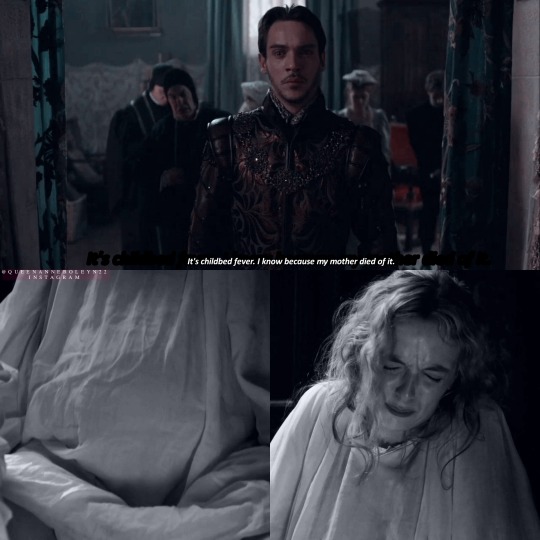
"At the end of January, the queen made her way from Richmond to the Tower of London so that she could spend Candlemas with her husband before entering her confinement. Reclining heavily on cushions and carpets in her barge, and kept warm by burning braziers filled with sweet herbs, she was conveyed along the freezing Thames with the utmost care. Upon reaching the Tower, she attended a ceremonial mass in the chapel of St John the Evangelist, after which wine and sweetmeats were served. Then, accompanied by an entourage of ladies headed by her mother-in-law Lady Margaret Beaufort, Elizabeth entered the chambers that had been appointed for her in the medieval Queen’s Lodgings. However, either the royal physicians had miscalculated the date of conception or the baby was premature, because just a few days later, on 2 February 1503, the queen was delivered ‘suddenly’ of a girl. This was in marked contrast to most of her other labours and adds weight to the theory that all was not well. Even though her favourite midwife, Alice Massy, had been present, it seems the labour was badly handled.
The baby was named Katherine, perhaps as a compliment to her parents’ grieving daughter-in-law. But neither mother nor daughter thrived. Soon after the birth, a messenger was dispatched to Kent to find a doctor named ‘Aylsworth’ or ‘Hallysworth’. The queen’s symptoms are not clear, but it is possible that she had succumbed to a post-partum infection such as puerperal fever, or that she was suffering the consequences of iron- deficiency anaemia. The more babies a woman bore, the greater the risk of sickness or death due to the increased physical toll on her body, coupled with her advancing age. The infant princess also began to wane, and on 10 February she died. Elizabeth followed her to the grave the following day, her thirty-seventh birthday. Her husband was prostrate with grief.
According to one account, he ‘privily departed to a solitary place and would no man should resort unto him.’ His last act before retreating to the seclusion of his privy chamber at Richmond Palace was to send Sir Richard Guildford and Sir Charles Somerset to the household of his late wife the day after her death. They were to convey his assurances to the staff that he would find them places elsewhere. - The private lives of the Tudors
#perioddramaedit#the tudors#history#edit#history edit#henry viii#henry vii#the white princess edit#the white princess#twpedit#jodiecomeredit#jodie comer#jonathan rhys meyers#tudorsedit#tudorsdaily#tudor dynasty#parallels#philippa gregory#16th century#elizabeth of york#lizzie x henry#margaret beaufort#alice massy#katherine tudor#women in history#english history#henry x lizzie#jrmedit#jrm#thetudors
167 notes
·
View notes
Text
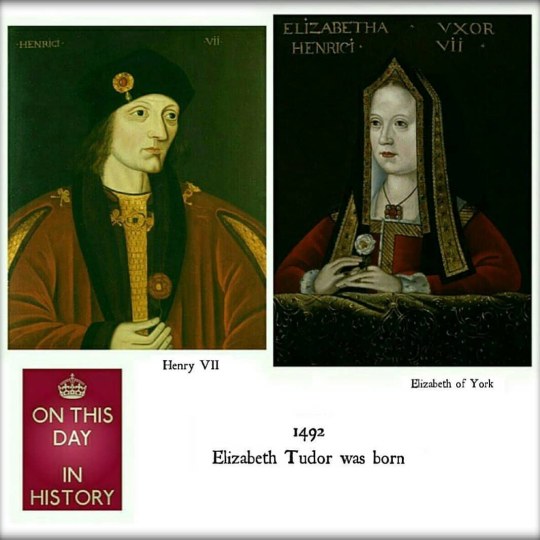
On This Day In History
.
2 July 1492
.
Elizabeth Tudor, the second daughter & fourth child of Henry VII of England & Elizabeth of York, was born
.
.
◼ Elizabeth was born on Saturday 2 July 1492 at Sheen Palace in Surrey (later rebuilt by her father as Richmond Palace, the remains of which are now part of Richmond-Upon-Thames, London).
.
◼ Elizabeth spent much of her short life at the royal nursery of Eltham Palace, Kent, with her brother Henry (the future King Henry VIII) & her sister Margaret (later Queen of Scotland) under the guidance of a Lady Mistress, presided over by her mother. Elizabeth's oldest brother, Arthur, as heir to the throne, was brought up separately in his own household. Just before her death, Henry VII proposed a marriage alliance between Elizabeth & the French Prince, Francis, who later became King Francis I of France.
.
◼ Elizabeth died on Monday 14 September 1495 after suffering from Atrophy at the age of three years & two months. Elizabeth was brought from Eltham in state & buried on the north side of St. Edward the Confessor's Shrine in Westminster Abbey on Friday the 27th. Elizabeth was the first of four of King Henry and Queen Elizabeth's children to die prematurely & they were greatly affected.
.
◼ The large sum of £318 (£155,479.74 in today's money) was spent on her funeral & Henry erected a small tomb to his daughter in the abbey made from Purbeck & black marble. On top of the monument is a finely polished slab of black Lydian, upon which were placed inscriptions to Elizabeth & her effigy of copper gilt, both of which are now lost. Later, Elizabeth's younger brother Edmund (who died in 1500 at the age of 15 months) & her younger sister Katherine (who died in 1503 shortly after birth) were also laid by her side.
#britishmonarchy#royalfamily#royalty#royals#monarchy#Elizabethofyork#Henryvii#Kinghenryvii#houseoftudor#tudors#history#Royal#Royals#monarch#English#princess
3 notes
·
View notes
Text
Kitchen Renovations in Richmond Upon Thames, London
We are the purveyor of kitchen experiences for culinary queens, kings in cuisine and commercial caterers alike from our South West London hub.
Conscious cooking is more than just a skill, it's an art. I'm here to help you find the perfect style and design for your kitchen - no matter what space or budget!
If you are looking for the best kitchen renovations Richmond Upon Thames contact our team today Our contact information is below.
Thank you and we can’t wait to serve you!
We service the following areas around Lewisham, London.
Barnes
Castelnau
East Sheen
East Twickenham
Fulwell
Ham
Hampton
Hampton Hill
Hampton Wick
Kew
Mortlake
North Sheen
Petersham
Richmond
St Margarets
Strawberry Hill
Teddington
Twickenham
Whitton
Get in touch with our Kitchen Fitters Today!
Looking Forward To Working With You For All Your Kitchen Renovation Needs!
Company Info:
You can also find us on the map:
1 note
·
View note
Text
Most dangerous areas to live in Richmond
Online Business Reviews
Richmond is known as a relatively safe area, with one of the lowest crime rates in London.
But recently there has been an increase in violence in the residential south west London borough.
Two stabbings have occurred in the month of May – a 14-year-old victim of a burglary in Teddington Lock and a 39-year-old fatality in North Twickenham.
SEE MORE: Teenager stabbed in Teddington Lock robbery
SEE MORE: Richmond murder probe after man dies days after stabbing
In April and May, police issued dispersal orders after reports of youths gathering and setting off fireworks.
SEE MORE: Police issue fresh dispersal order for Richmond Riverside
Operation leader of the South West Basic Command Unit (BCU), Superintendent Andrew Wadey, said Richmond residents are "understandably concerned" about recent violent events.
But he told the Richmond & Twickenham Times the borough remains a safe place to live, work and study.
He said: "Our local ward officers are out on patrol providing visible reassurance for the local community. Both incidents related to individuals who were known to each other and, as a result, it is not believed that there is a wider risk to the public."
Crime statistics from the Metropolitan Police reveal the most and least dangerous places to live in Richmond upon Thames.
The figures on www.police.uk show the crimes that were reported in each of the borough's 18 wards throughout March 2021.
A total of 1,344 crimes were reported two months ago, which is still far lower than the rest of London.
Below, is a ward-by-ward breakdown of the number and types of crime that commonly occur across Richmond.
5) St Margarets and North Twickenham – 86
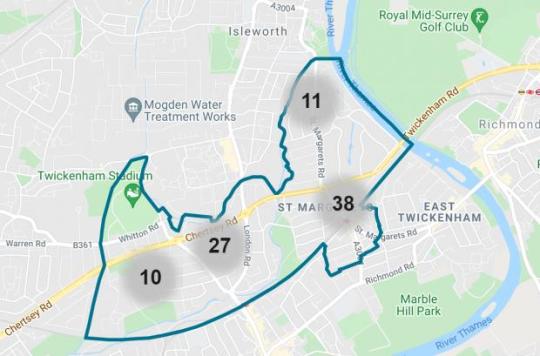
St Margarets and North Twickenham
There were 30 reports of anti-social behaviour in St Margarets and North Twickenham.
In addition to this, there were a handful of vehicle crimes, burglaries and violent crimes.
4) Heathfield – 88
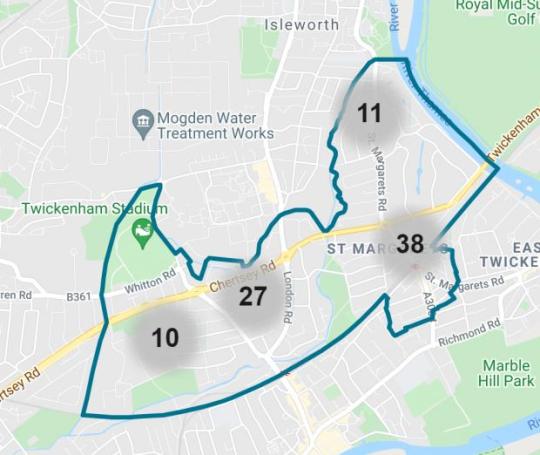
Heathfield
Of the 86 crimes reported in Heathfield anti-social behaviour accounted for 30.
There were 22 violence and sexual offences and 8 reports of vehicle crime.
3) Kew - 90
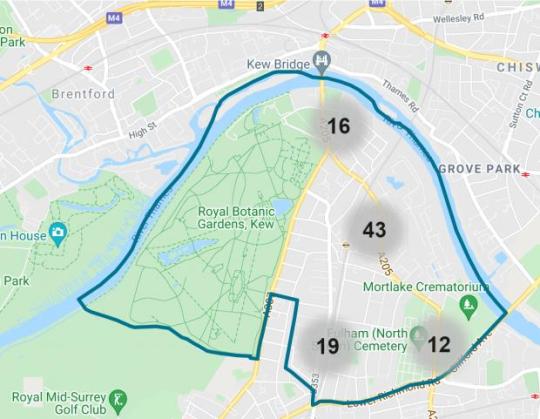
Kew
A total of 90 crimes were reported in Kew in March.
Among the crimes were 30 violence and sexual offences and 4 drugs offences.
2) North Richmond - 105
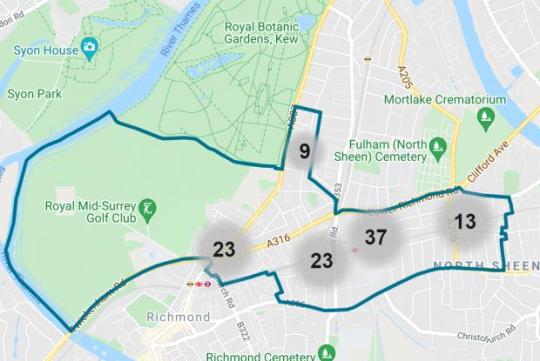
North Richmond
North Richmond had the second highest rates of crime in the borough.
Similar to other areas antisocial behaviour (27) and vehicle crime (25) came out on top.
1) South Richmond - 164
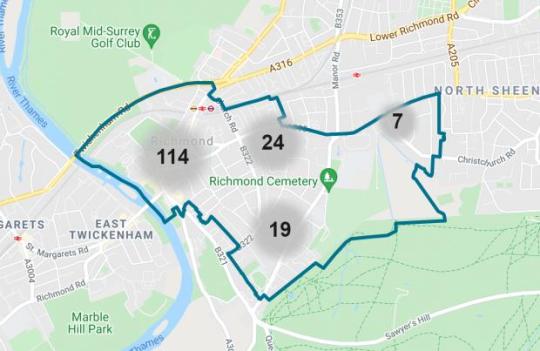
South Richmond
The ward with the highest rates of crime, South Richmond registered 164 reports in March.
Antisocial behaviour accounted for 55 of the crimes in South Richmond.
But there were also 17 violence and sexual offences and 15 incidences of vehicle crime.
The full list of crimes reported in Richmond wards continues below:
18) Ham and Petersham – 73
17) East Sheen - 73
16) Mortlake and Barnes Common – 72
15) Teddington - 72
14) Twickenham Riverside – 62
13) Whitton - 62
12) Barnes - 61
11) Hampton Wick – 58
10) Hampton North - 58
9) Fulwell and Hampton Hill – 57
8) West Twickenham - 57
7) South Twickenham - 56
6) Hampton - 50
We at Online Business Reviews provide useful tips and resources on online marketing processes, strategies, tools and much more that would be helpful to any online marketer.
https://onlinebusinessreviewsblog.blogspot.com/2021/05/most-dangerous-areas-to-live-in-richmond.html
0 notes
Photo

MILTON JONES (b1964-).British Comedian,best known for regularly appearing as a panelist on the British satirical topical quiz show,Mock the Week.His stand-up routine often involves one-liners and puns delivered in a deadpan and neurotic style of humour.https://en.wikipedia.org/wiki/Milton_Jones
LIVES IN: ST MARGARET’S. Address NOT KNOWN
Residence: ?-present.
Plaque?: No.
#Milton Jones#British Comedians#Comic Richmond#Famous Residents of Richmond upon Thames#St Margaret's Richmond Upon Thames#Richmond Upon Thames
2 notes
·
View notes
Photo
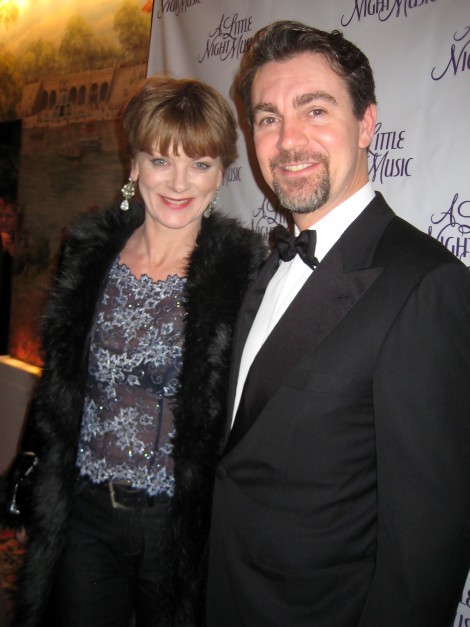
SAMANTHA BOND (b1961-).British actress,whose most notable roles included as Lady Rosamund Painswick,in the hit perior drama,Downton Abbey,and as Miss Moneypenny during Pierce Brosnan;s tenure as James Bond in the Bond film franchise. https://en.wikipedia.org/wiki/Samantha_Bond
AND her husband,
ALEXANDER HANSEN (B1961-).Norwegian-born British theatre actor on Broadway and the West End stage. https://en.wikipedia.org/wiki/Alexander_Hanson_(actor)
LIVES IN: ST MARGARET’S. Address NOT KNOWN
Residence: ?-present.
Plaque?: No.
#Samantha Bond#Alexander Hansen#British Actresses#British Theatre Actors#Norwegian Actors#Celluloid Richmond#Theatrical Richmond#Famous Residents of Richmond upon Thames#St Margaret's Richmond Upon Thames#Richmond Upon Thames
0 notes
Photo
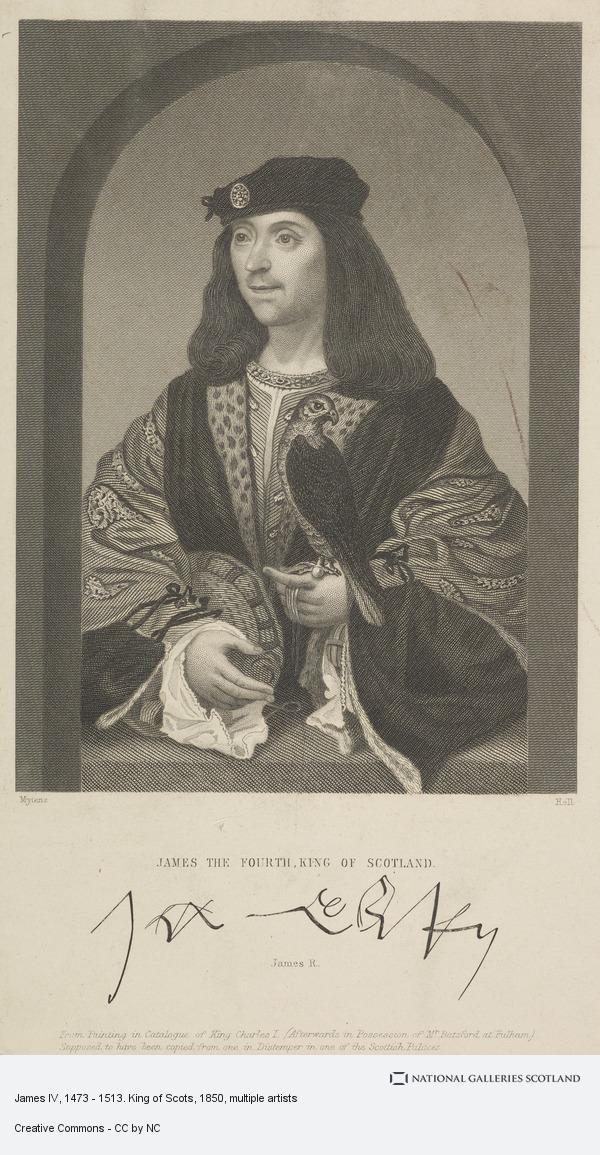

King James IV's coronation took place on 24 June 1488 at Scone Abbey.
Young James had been a pawn in the forces that had brought down his father, and was said to have warn an iron belt around his waist in penance.
James was a Renaissance King who spoke several languages including Gaelic, English and French and was keen on arts and learning. Aberdeen University was founded, the printing press came to Scotland and education was made compulsory for barons and wealthy landowners. He spent lavishly on the court and built new halls in Edinburgh and Stirling castles. Edinburgh became main burgh and centre of government and justice.
He successfully settled major feuds between his nobles and between the Highland clans, and ended the hold of the MacDonald who had semi-independently ruled the Western Isles. He supported the Yorkist pretender Perkin Warbeck which provoked a military response from his Henry VII of England. However this was patched up in a truce ‘of perpetual peace‘ in 1502, and his marriage to Margaret Tudor, daughter of Henry VII, in the following year was to ultimately bring the thrones of Scotland and England together.
By 1513 Henry VIII was on the throne of England and fighting in France. Encouraged by Louis XII of France under the ‘Auld Alliance’ James invaded England but the Scots were massacred by the English forces under the Earl of Surrey at the Battle of Flodden Field in Northumberland on 9 September 1513. Like many of Scotland’s nobility, James was killed, there have been many theories about what happened to his body the most likely outcome is after the battle it was taken to Berwick, where it was embalmed and placed in a lead coffin before being transported to London.
The recipient of this gory package was said to have been Catherine of Aragon, first wife of Henry VIII, and in charge of the family business while the English king fought in France.
She, in turn, sent the dead king’s surcoat, blood-stained and slashed, to her husband with the recommendation that he use it as a war banner.
The body was left in the monastery of Sheen in Richmond upon Thames unburied due to James having been excommunicated by The Pope for breaking The Treaty of Perpetual Peace. The Monastry was eventually demolished, but nothing is known of what happened to our King.
Legend has it that the skull was removed and used as a football before the master glazier to Elizabeth I took it as a souvenir. Legend also has it that the skull was eventually handed over to the Great St. Michael’s Church in Wood Street in the City of London and buried there. The church is long gone, as is the church yard, the latter now occupied by a pub by the name of the Red Herring. David Ross, historian and convener of The Society of William Wallace must have believed this as he, along with some London friends, had plans to install a plaque to James IV somewhere in Wood Street London. Sadly, big Davie passed away unexpectedly before ambition was never realised.
Other unlikely theories go that James had survived and had gone into exile, or that his body was buried in Scotland. Two castles in the Scottish Borders are claimed as his resting place. The legend ran that, before the Scots charge at Flodden, James had ripped off his royal surcoat to show his nobles that he was prepared to fight as an ordinary man at arms. Robert Lindsay of Pitscottie, writing in the 1570s, claimed that a convicted criminal offered to show him the Kings grave ten years after the battle, but Albany refused.
If David Ross believed it was in London that’s good enough for me, but anyone wishing to reflect on this much loved King best go to Flodden Field and pay your respects to all that died there.
12 notes
·
View notes
Photo


24th June 1488 saw the coronation at the age of 15 of King James IV arguably the first effective monarch of the House of Stewart.
Young James had been a pawn in the forces that had brought down his father, and was said to have warn an iron belt around his waist in penance.
James was a Renaissance King who spoke several languages including Gaelic, English and French and was keen on arts and learning. Aberdeen University was founded, the printing press came to Scotland and education was made compulsory for barons and wealthy landowners. He spent lavishly on the court and built new halls in Edinburgh and Stirling castles. Edinburgh became main burgh and centre of government and justice.
He successfully settled major feuds between his nobles and between the Highland clans, and ended the hold of the MacDonald who had semi-independently ruled the Western Isles. He supported the Yorkist pretender Perkin Warbeck which provoked a military response from his Henry VII of England. However this was patched up in a truce ‘of perpetual peace‘ in 1502, and his marriage to Margaret Tudor, daughter of Henry VII, in the following year was to ultimately bring the thrones of Scotland and England together.
By 1513 Henry VIII was on the throne of England and fighting in France. Encouraged by Louis XII of France under the ‘Auld Alliance’ James invaded England but the Scots were massacred by the English forces under the Earl of Surrey at the Battle of Flodden Field in Northumberland on 9 September 1513. Like many of Scotland's nobility, James was killed, there have been many theories about what happened to his body the most likely outcome is after the battle it was taken to Berwick, where it was embalmed and placed in a lead coffin before being transported to London.
The recipient of this gory package was said to have been Catherine of Aragon, first wife of Henry VIII, and in charge of the family business while the English king fought in France.
She, in turn, sent the dead king's surcoat, blood-stained and slashed, to her husband with the recommendation that he use it as a war banner.
The body was left in the monastery of Sheen in Richmond upon Thames unburied due to James having been excommunicated by The Pope for breaking The Treaty of Perpetual Peace. The Monastry was eventually demolished, but nothing is known of what happened to our King.
Legend has it that the skull was removed and used as a football before the master glazier to Elizabeth I took it as a souvenir. Legend also has it that the skull was eventually handed over to the Great St. Michael's Church in Wood Street in the City of London and buried there. The church is long gone, as is the church yard, the latter now occupied by a pub by the name of the Red Herring. David Ross, historian and convener of The Society of William Wallace must have believed this as he, along with some London friends, had plans to install a plaque to James IV somewhere in Wood Street London. Sadly, big Davie passed away unexpectedly before ambition was never realised.
Other unlikely theories go that James had survived and had gone into exile, or that his body was buried in Scotland. Two castles in the Scottish Borders are claimed as his resting place. The legend ran that, before the Scots charge at Flodden, James had ripped off his royal surcoat to show his nobles that he was prepared to fight as an ordinary man at arms. Robert Lindsay of Pitscottie, writing in the 1570s, claimed that a convicted criminal offered to show him the Kings grave ten years after the battle, but Albany refused.
If David Ross believed it was in London that's good enough for me, but anyone wishing to reflect on this much loved King best go to Flodden Field and pay your respects to all that died there.
28 notes
·
View notes